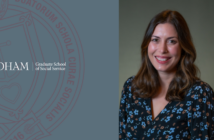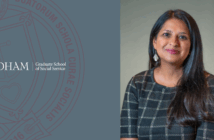The Rainbow Justice Project is an ongoing project, featuring a participatory action photo documentary in partnership with LGBT elders released from prison. The purpose was to collaboratively design and implement a project to build public awareness and combat societal stigma among LGBT individuals with multiple intersectional identities, including a history of criminal justice involvement. The LGBT elders were especially concerned about the invisibility and lack of culturally responsive services available to LGBT persons before, during, and after prison. This project is in partnership with Ron Levine, a social-documentary photographer and creator of the “Prisoners of Age” project who was recruited to be part of the team. The “Prisoners of Age” project is a series of photographs and interviews with elderly inmates and corrections personnel conducted in prisons both in the United States and Canada since 1996. It is designed to play a role in stimulating social and institutional change by addressing these issues of social justice and human dignity through images and interviews. The photo exhibits have been shown internationally.
For the first round of recruitment, three formerly incarcerated LGBT elders agreed to participate in a photo shoot and short documentary project. The participants signed a release form for their photos and interview excerpts to be used for the documentary project. The 90 minute interviews were shot with a Canon 5D mark II camera and 50 & 85mm lenses. Sound was direct to film using a RODE shotgun microphone attached to the flash plate. During the shooting, the filmmaker asked to participants to describe their past and current experiences and future goals. The footage was edited to be a five minute documentary short. A series of formerly incarcerated LGBT persons of diverse ages also were taken to build intergenerational solidarity with the ongoing human rights struggle for LGBT rights. A project white paper entitled: ‘Coming Out’ of Prison: Exploring the Experiences of Formerly Incarcerated LGBT Minority Elders is available for free download.
Project Team Leaders: Dr. Tina Maschi, Jo Rees and Ron Levine
Show Them Who I Am: Portraits of Formerly Incarcerated LGBT Persons Released From Visible And Invisible Prisons (Click here to see the portraits.)
Video Transcript
RE: My name is Duwan. I’m 55-years old. I was born in Brooklyn, New York. I was on the down low. You know, I didn’t really start coming out into – well I came out when I was young. But, I mean, it was just really hard for me to accept that, you know, and I went through men and women, because I was trying to find myself, you know.
RE: I’m Randy Killings, and I’m 49. Well I was originated in Brooklyn, and my mom had me in Jamaica and came back to New York.
RE: My name is Mark. I’m 44-years old. I was born in Manhattan. Went to prison for a while. And now I’m here enjoying my life.
IN: So tell me, I want to hear the love story.
RE: Well, actually we met on the medication line going to medication that one night. And one of our mutual friends had brought Mark down. I think he had just got transferred here.
RE: Yeah, I got transferred here.
RE: He said I got somebody I want you to meet, and he told him the same thing. And when we met I just was attracted instantly, which was unusual for me, because I don’t usually deal with any kind of activity in jail. But when I saw him I said you’re going to be my husband. And he laughed. And the next day we started a relationship.
RE: I grew up always gay, but I was so boisterous and strong with it I didn’t get a lot of abuse or stigmas or things that most gays go through.
RE: Everywhere I went everyone would be like, you know, that’s Randy, he’s gay, but you all don’t mess with him. He ain’t dealing with that, you know.
RE: We were in something called maximum prison. Maximum prison, people who are not actually coming home for a very long time if they’re coming home. So the mindset is like this is mine, this is how I’m going to run it, and that’s how it was, and there was no changing it.
RE: Because you have to get stronger in jail, you really do, because there’s such a closed in community where if you’re not strong enough you’ll get sucked under.
RE: Yes, you get sucked under.
RE: You’ll be devoured.
RE: I was always a good person, but the reason I was in jail this time was because at that time I was into a lifestyle where it was a lot of money. I hung out with a lot of guys, it was a stick up crew. And we wore a lot of jewelry and stuff. And I smoked crack. As I was leaving the guy tried to rob me outside of the crack house, and we were fighting, and I punched him hard, and he fell backwards onto the Johnny pump, and it went through his head. In the time it took for me to be released they told me, they gave me a CRD to get out. I immediately just laid down everything. I stopped using, which was predominately my problem. I transferred to another side of **, which was called the Core Program, which helped people integrate back into society and give them an option. And I knew that if I went back to where I was from that it would be really, really hard for me. I signed for Project Renewal PTS Program. It was Transition Housing for Parolees. Right there I prayed that God would take the taste out of my mouth not to get high, because I got clean, but it was a different feeling when I was in the free air, you know. So I had to go to a program for a year, which I completed very, very quickly. I graduated in like four months. And my director said, you know, you have a gift, because I was always helping people and connecting with them. And he said maybe you need to think about counseling.
RE: I look at them, and I see these two how their relationship, you know, I mean, they’re married and stuff like that, and that’s what I want to be. Right now, you know, I’m looking. I’m hoping to find somebody nice that, you know, I could grow old with, you know, spend the rest of my time with.
Join the Movement at www.betheevidence.org!
Tina Maschi, LCSW, PhD Associate Professor Fordham University Graduate School of Social Service 113 West 60th Street New York, NY 10023 tmaschi@fordham.edu



